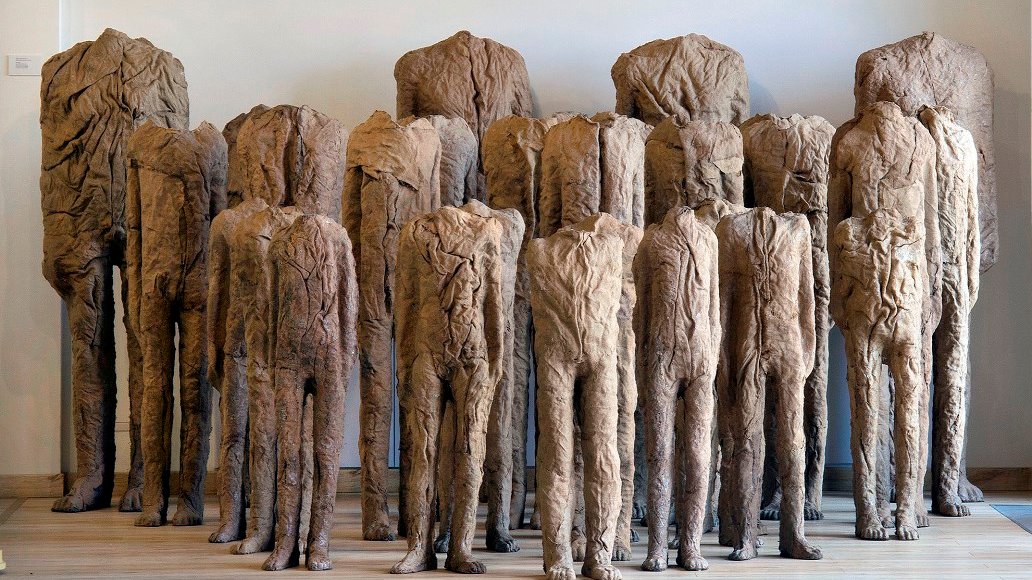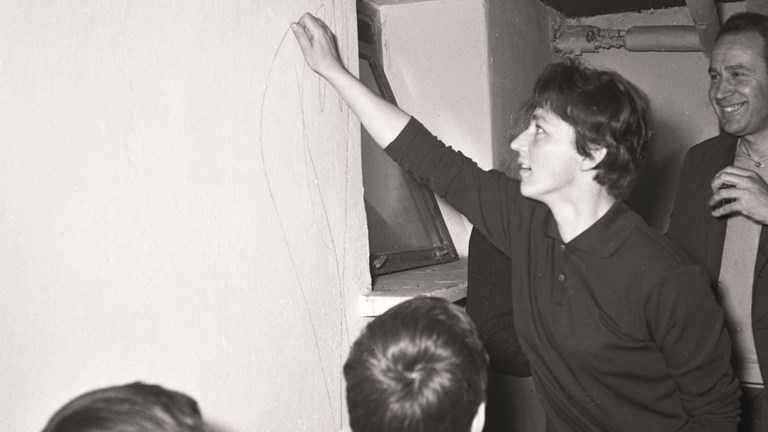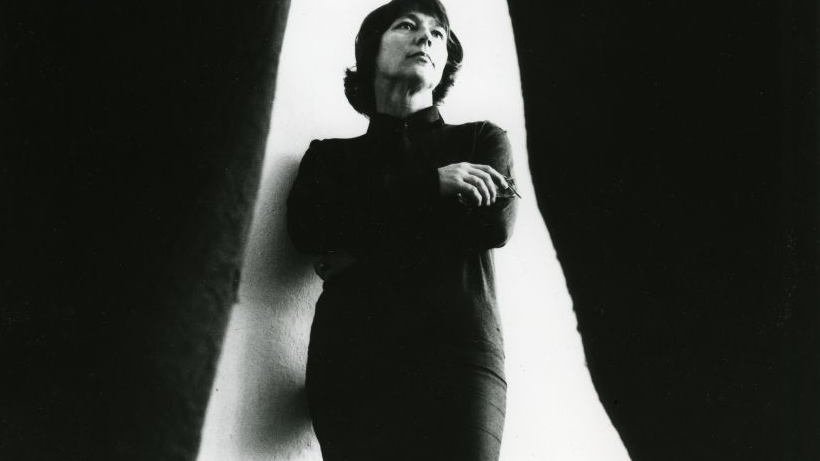Abakanowicz in Poznań: an enduring presence

Her most monumental outdoor project, The Unrecognised, dating back to 2002, can be seen Poznań's Citadel park. To further emphasise the artist's presence in the city and recall her numerous ties with it, two exhibitions will be held, one in the National Museum of Poznań (curated by Anna Borowiec) and another the Piekary Gallery (curated by Cezary Pieczyński). While the National Museum display offers a cross-section of the works by this creator of abakans, placing emphasis on her teaching endeavours at the Poznań Higher School of Fine Arts (currently University of the Arts), the Piekary Gallery exhibition centres on figurative motifs and the interpretation of The Unrecognised by the Poznań artistic duo of Maciej Kurak and Max Skorwider.
At the invitation of the then rector of the State Higher School of Fine Arts Prof. Stanisław Teisseyre, Abakanowicz became one of the two women, next to Magdalena Więcek, who ran her own studio. Her stint as professor of the Poznań university began in 1965 and continued for 25 years leading to the development of a unique syllabus. The open and revolutionary nature of this programme has been attested to by fascinating archival materials collected by Anna Borowiec. Prof. Anna Goebel recollected on the many years she worked with Abakanowicz: "At the time, it was not easy to find a studio that would equal hers in freedom of thought, creativity and simply openness". According to Goebel, Abakanowicz, "never forced anything on you, she would always say: "We don't hand out recipes'. (...) The syllabus was a skeleton to be fleshed out during the academic year. It was an innovative approach the way I see it. Of course, there were rules. You had to know your technology and materials, which after all give you your footing. But then Abakanowicz let every student use them to build any structure they would imagine". No wonder that students would stream into her Tapestry Studio from all over the world. After all, Abakanowicz was not only a charismatic artist, but also an equally charismatic teacher. Anna Borowiec remarks in the National Museum exhibition catalogue: "In her reply to a student applying for admission into her studio in the early 1980s, Abakanowicz explained that one of the main topics in her classes was the individuality of the human being."
Thanks to its great curatorial strategy, the National Museum exhibition offers not only opportunities to view many of the artist's fascinating works, but also rare insights into her teaching methodology as professor at the Poznań university. You can, among others, watch a 1979 film and see documents from that year showing a workshop in the Tapestry Studio. Students would then make objects, mostly of sisal fibres, which they wore to the opening of the ON Gallery exhibition. The challenge was: "Change yourself by creating an object that will then exists independently". Thus, after they presented the art on your own body, the artists exhibited the objects, which approximated the abakan approach, as autonomous works. Activities involving these pieces are additionally documented in a film shot in the university courtyard, showing interactions between individual students and their creations. The way this exercise unfolded and in fact its very essence emphasise the importance of the touch for Abakanowicz, touch being inherent in the entire human body that can sense things, covered with sensitive skin. Both the works of the artist herself from the Black Clothes series, as well as her student projects made in her studio, build on the idea of abakans seen as spaces that usher you in and form a shelter or cocoon of sorts that is both protective and indicative of the fragility of the flesh.
The National Museum exhibition showcases a few classic abakans which the artist describes poetically in the following way: "The threads I weave make up a patchy fabric whose expression depends on the tension or relaxation of my nerves and on the circulation of juices under my skin. Abakans form a record of the artist's unique personal style which embodies the movements of her working hands, the tension of her nerves and the pulse of her bloodstream. Aware of the importance of motion, Abakanowicz hung most of her works in this series up in space: "A standing form closed in its content. It responds to neither airflow or touch. It is a shape made to endure. A hanging form that yields to the touch, absorbs its energy and responds with its entire surface by moving and transforming its shape and position in space. It is a phenomenon limited in time by the energy imparted in it that ends with a return to its static position". Therefore, it is also in the arrangement of the National Museum exhibition that the abakans "float" in space as intended by the artist.
Intimate in comparison with the monumental exhibition at the National Museum, the presentation of works at the Piekary Gallery is entitled "Magdalena Abakanowicz. My forms are successive skins that I remove". Its leitmotif are figures made by the artist and the Poznań installation The Unrecognised. Abakanowicz said this about The Unrecognised in Poznań: "This is my most important project. For me, it is a sign of a lasting fear, a confrontation with quantity and myself".
Along with the figures, a specific kind of pathos emerges in Magdalena Abakanowicz's work, saturated with existential references, reflections on the human condition and loneliness in a crowd. Much has been written about these figures that walk or stand, hollow, huddled or seated, a testament to the artist's uncanny ability to build tension between the lonely individual and the collective. Much has also been written about the drama of the human fate and human dignity and suffering. Abakanowicz says: "I keep working on the same old story, as old as existence itself, I talk about it and about the fears, disappointments and longings that it describes."
In 2009, posing as hosts of the Niewielka Gallery in Poznań, Maciej Kurak and Max Skorwider (now PUA professors) reinterpreted The Unrecognised. The artists faked a theft of one of the 112 figures standing in the Poznań's Citadel park and presented their act in a parody video. The name of the Niewielka Gallery (its name being Polish for small) was not accidental as it belittled its own status in a self-depreciating manner, especially in relation to the display of the great sculptress, or rather a great sculptor, as Abakanowicz wanted to be called, who repeatedly distanced herself from the term "weaver". No actual theft of the figure took place as the artists filmed an "abduction" of a pre-made copy of one of the cast-iron sculptures. Newspapers later reported: "Magdalena Abakanowicz's exhibition The Unrecognised is a ready-made quote from both Abakanowicz and Duchamp. Significantly, the artists only "borrowed" one of the figures and, in doing so, completely deprived it of its original meaning; an installation about an individual getting lost in a crowd, about anonymity and alienation, became a mere shadow of Abakanowicz's work". In their project, Kurak and Skorwider paradoxically, and not only ironically, tackled Abakanowicz's greatness and in fact emphasised it. They would not "abscond with" a figure of an insignificant artist. The exhibition's curator Cezary Pieczyński captured it perfectly, pointing to how the act bore out the importance of Abakanowicz's presence on the Poznań artistic scene.
Both exhibitions show the importance of matter for Abakanowicz: "No tool stands between me and the material I use to create. I choose it with my hands. I shape it with my hands. My hands energise it. As I translate an idea into a shape, my hands always convey something that eludes concepts. They reveal the unconscious." By this, the artist brings out the vitality of matter in her own work resulting in part from its direct tactile relationship with her creative body.
By naming itself after Magdalena Abakanowicz, the Poznań University of the Arts found an excellent opportunity to show what a strong presence this artist commands in this city. Some of her figures walk in front of the Bałtyk office building at the Kaponiera roundabout, intriguing passers-by with their form in the middle of a busy area.
Marta Smolińska
translation: Krzysztof Kotkowski
- Magdalena Abakanowicz: We are fibrous structures
- National Museum
- open from 8.08 to 24.10
- curated by Anna Borowiec, organised in cooperation with the PUA
- admission: PLN 30 and PLN 20
- Magdalena Abakanowicz. My forms are successive skins that I remove
- Piekary Gallery
- open: 10.08-1.10
- curated by Cezary Pieczyński
- free admission
© Wydawnictwo Miejskie Posnania 2021




